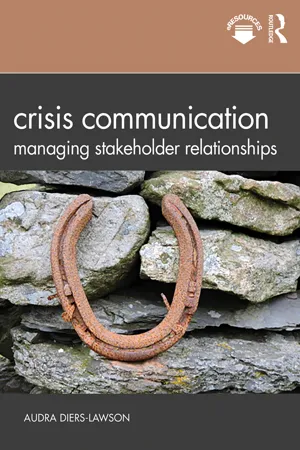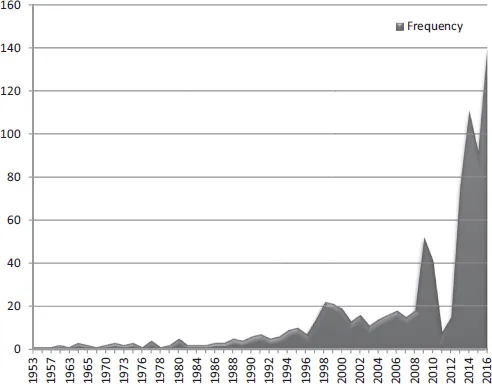
- 320 pages
- English
- ePUB (mobile friendly)
- Available on iOS & Android
About this book
Crises come in many shapes and sizes, including media blunders, social media activism, extortion, product tampering, security issues, natural disasters, accidents, and negligence – just to name a few. For organizations, crises are pervasive, challenging, and catastrophic, as well as opportunities for organizations to thrive and emerge stronger.
Despite the proliferation of research and books related to crisis communication, the voice that is often lost is that of the stakeholder. Yet, as both a public relations and management function, stakeholders are central to the success and failure of organizations responding to and managing crises in a cross-platform and global environment. This core textbook provides a comprehensive and research-driven introduction to crisis communication, critical factors influencing crisis response, and what we know about predicting stakeholder responses to crises. Incorporated into each chapter are global case studies, ethical challenges, and practitioner considerations. Online resources include an extensive set of multimedia materials ranging from podcast mini-lectures to in-class exercises, and simulation-based activities for skills development (https://audralawson.com/resources/crisis-communication-managing-stakeholder-relationships/).
Demonstrating the connection between theory, decision-making, and strategy development in a crisis context, this is a vital text for advanced undergraduate and postgraduate students of Communications, Public Relations, Marketing, and Strategic Management.
Frequently asked questions
- Essential is ideal for learners and professionals who enjoy exploring a wide range of subjects. Access the Essential Library with 800,000+ trusted titles and best-sellers across business, personal growth, and the humanities. Includes unlimited reading time and Standard Read Aloud voice.
- Complete: Perfect for advanced learners and researchers needing full, unrestricted access. Unlock 1.4M+ books across hundreds of subjects, including academic and specialized titles. The Complete Plan also includes advanced features like Premium Read Aloud and Research Assistant.
Please note we cannot support devices running on iOS 13 and Android 7 or earlier. Learn more about using the app.
Information
Part 1
Crisis communication and the stakeholder relationship management perspective
1
Introducing crisis communication as a field of practice
Learning objectives
- Understand the evolution of the field of crisis communication from the 1950s to present
- Be introduced to the five critical factors driving knowledge and research in crisis communication
- Reflect on the state of crisis communication’s research and practice
Defining crisis, crisis communication in a 21st century context
Defining a Crisis
- Stakeholder relationship management: Managing, building, or re-building stakeholder relationships
- Narrating the crisis: Media engagement and direct stakeholder engagement across different platforms of communication – from face-to-face to social media
- Communication strategy development and implementation: A campaign-based approach using measurable objectives, good intelligence, and continual evaluation of the effectiveness of the approach
Growth and change within the field of crisis communication


Table of contents
- Cover
- Endorsements
- Half Title
- Title
- Copyright
- Contents
- List of figures
- List of tables
- List of practitioner perspectives and case studies
- List of contributors
- Part 1 Crisis communication and the stakeholder relationship management perspective
- Part 2 Issue factors: Evaluating stakeholders, risks, and crisis types
- Part 3 Internal stakeholders and organizational factors: Evaluating the organization’s crisis capacity
- Part 4 Stakeholder factors: Shifting from the inside out
- Part 5 Message factors: Crisis response that focuses on stakeholder needs
- Part 6 Shaping crisis outcomes: What do crises mean for organizations?
- Index